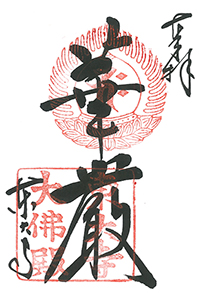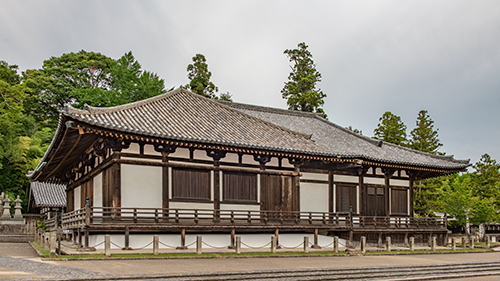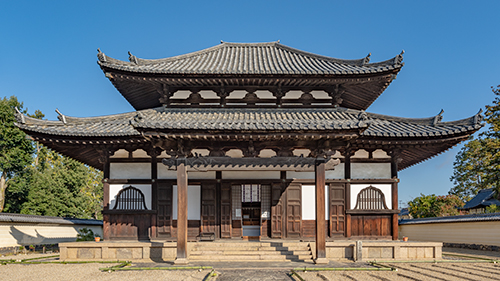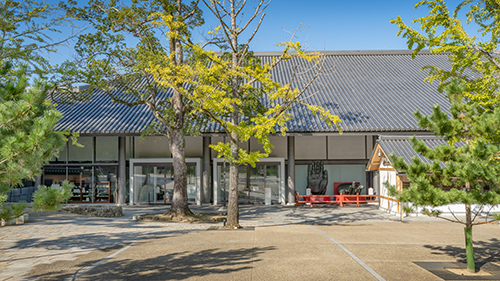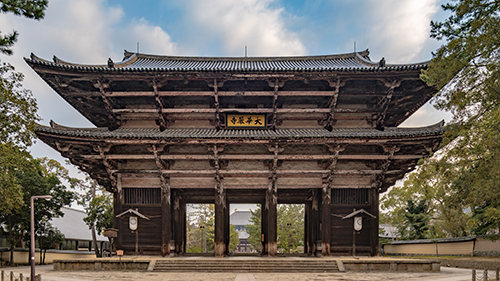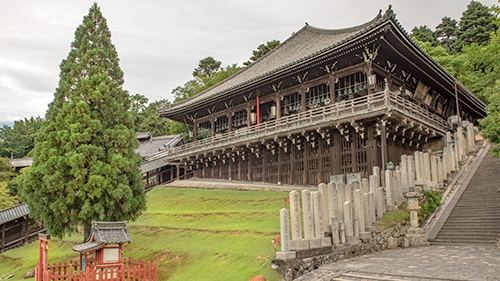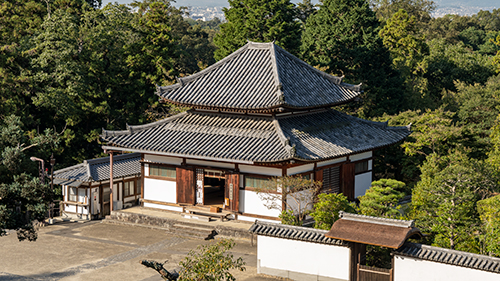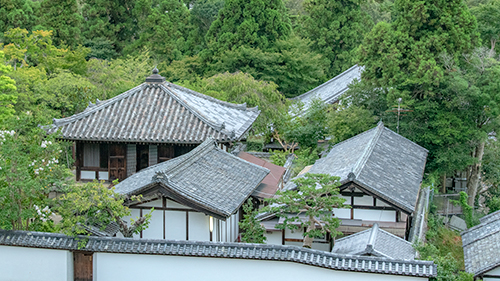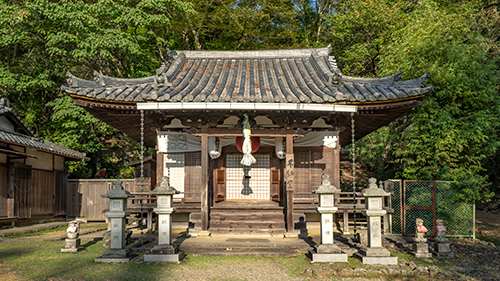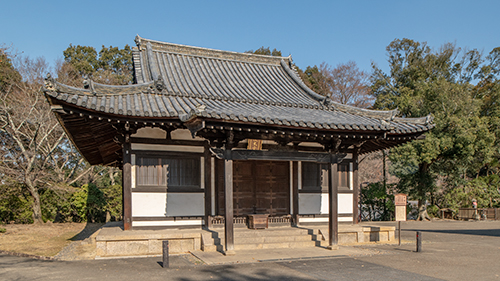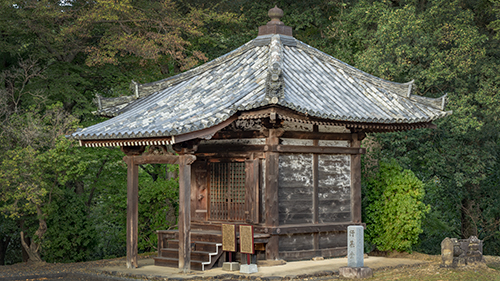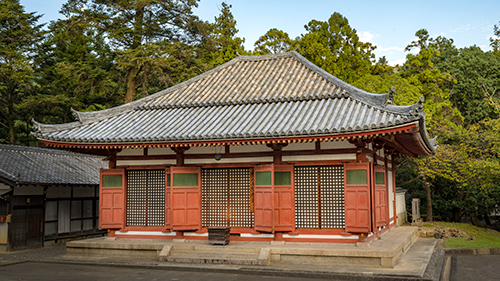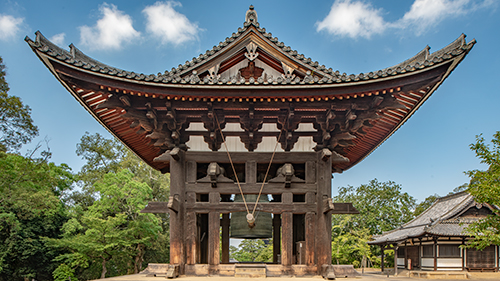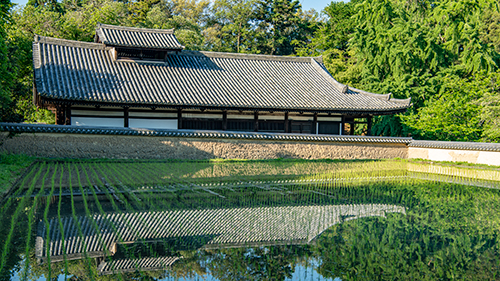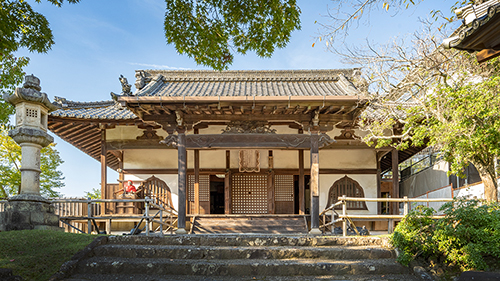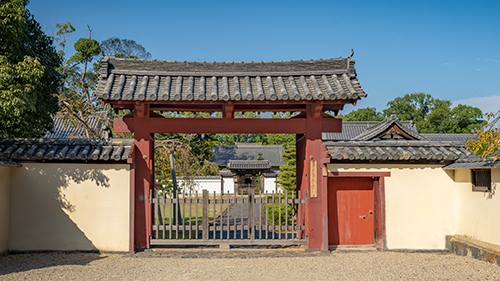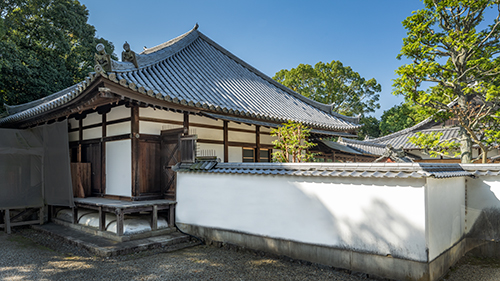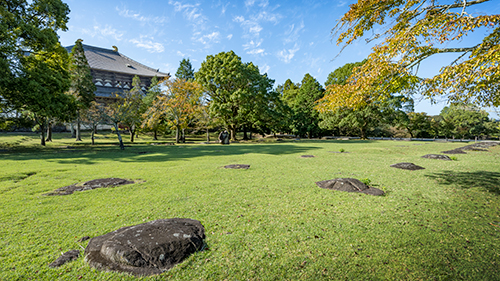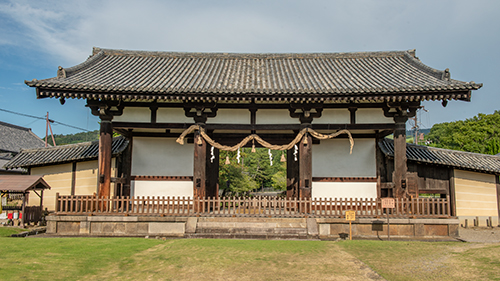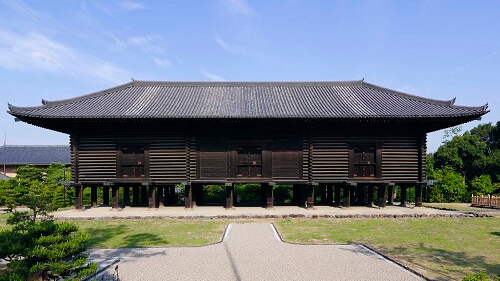Great Buddha Hall
(Daibutsu-den)
Precincts Guide Map is here.
National Treasure / 18th century
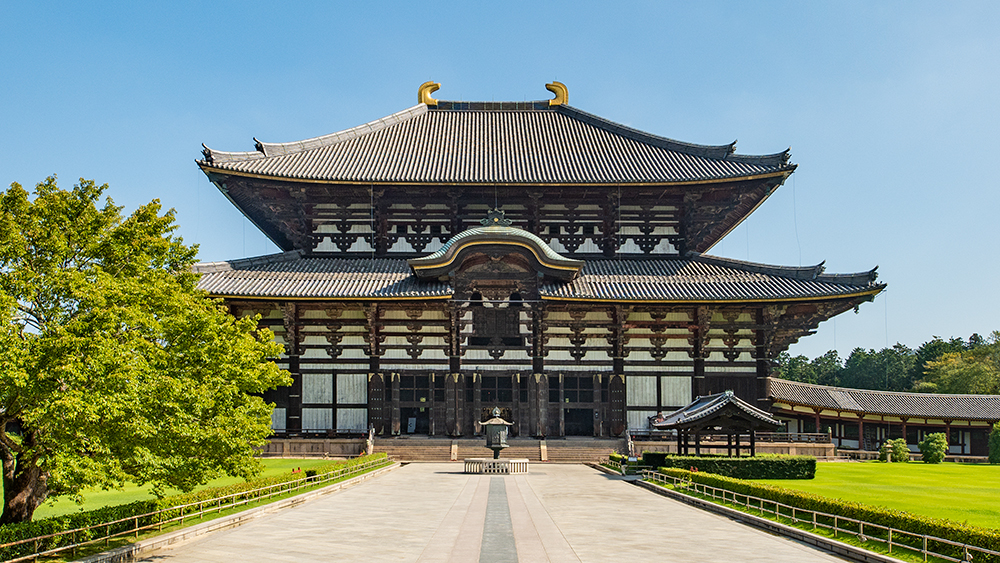
The Great Buddha Hall is the Main Hall (kondō) of Tōdai-ji. Built first in the Nara period it has been destroyed twice by fire in 1180 and again in 1567. The present structure, dating to the Edo period, was built under the direction of the monk Kōkei. The original hall and the one rebuilt in 1195, were both eleven bays wide; the present structure, however, was reduced in size to seven bays because only limited funds were available. Nevertheless, the height and depth of the structure remain the same as those of the original. The Great Buddha Hall is the largest wooden structure in the world.
[Dimensions] Width 57.012m, Length 50.480m, Height 48.742m
Attention
Sketching and using a flashlight are prohibited in the Great Buddha Hall.
Commemorative photos may be taken freely in the corridor and along the approach and inside the Hall but taking group photo and the use of tripod stand are prohibited.
Reproduction, reprinting, processing, selling, etc. of images related to Todaiji Temple for advertising, commercial or for-profit purposes is prohibited.
Vairocana Buddha (Daibutsu)
National Treasure / 8th century
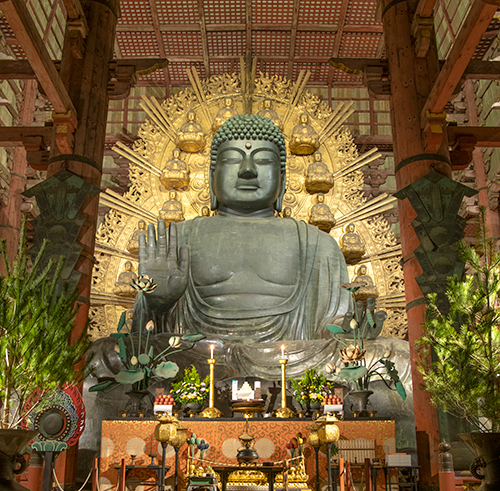
The Daibutsu is properly known as Vairocana Buddha, the Buddha the light of whose knowledge and compassion illumines widely. Śākyamuni, the Historical Buddha, who was born in the city of Kapilavastu in India sometime around 580 B.C.E., became a mendicant at the age of twenty-nine and after spending six years practicing austerities eventually gained great religious insight at the foot of the Bodhi Tree on the banks of the Nairanjana River. The Avatam.saka Sutra (Kegon-kyō) describes the moment of Śākyamuni’s enlightenment as his achievement of the condition of a Buddha who transcends both space and time. It describes the world of Vairocana as magnificent, virtuous and grand and embellished by the various accomplishments of the bodhisattvas. According to the text, the songs of birds, the colors of flowers, the flowing of water and the forms of clouds are all part of Vairocana’s teachings to save all living things.
On the lotus petals on the base of the Great Buddha are engravings of the World of the Lotus Treasury (Rengezō sekai), pictorial representations of the “world of enlightenment” described in the sutra. They are beautiful representations of the notion that each individual is not an isolated existence, but that all phenomena have limitless connections and dimensions and that the entire universe is enveloped in the light of Vairocana’s wisdom.
Octagonal Lantern
National Treasure / 8th century
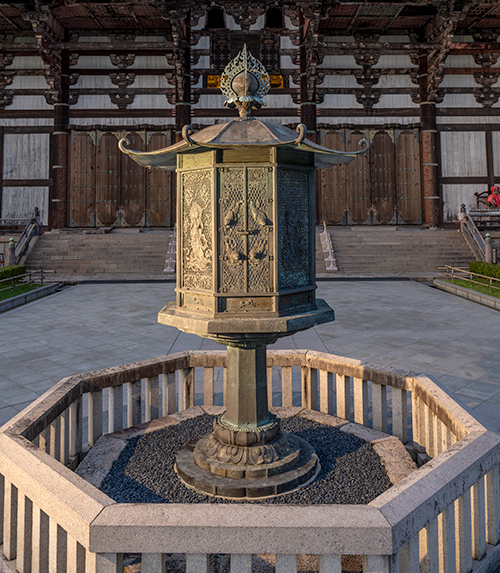
The Octagonal Lantern in front of the Great Buddha Hall dates from the time of the founding of Tōdai-ji. The distinctive large fire chamber is covered with a sloping roof surmounted by a jewel-like form. It rests upon a stone base supported by a stone post emanating from a lotiform pedestal. The eight panels of the fire chamber are grilles of diamond shapes. The four stationary panels are ornamented with celestial musicians while the four pairs of hinged doors are decorated with lions running across clouds. The conception of the celestial musicians is particularly wonderful with their lithe poses, well-realized foreshortening of their chests and their hands that hold instruments, and the movement of the scarves caught by the wind. The post bears an excerpt from a Buddhist text extolling the merits of lighting lanterns.
Visitor Information
-
Opening Hours / Admission Fees
-
MAP
-
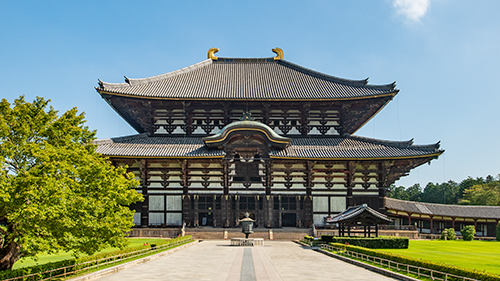
» Daibutsu-den

